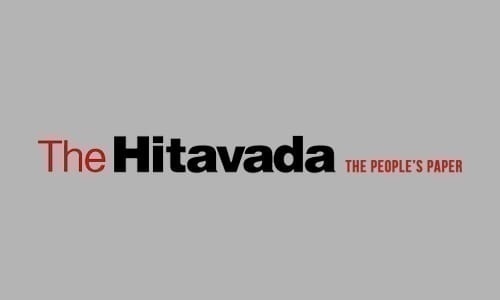Security Dynamics Of LS Polls
| Date :22-Mar-2024 |

By Lt General M K Das
ELECTIONS to the Parliament (Lok Sabha) and four State Assemblies of Odisha, Andhra Pradesh, Arunachal Pradesh and Sikkim have been announced. The election will be held in seven phases as was the case in the year 2019. A lot of curiosity may be about having multi-phase elections stretched over one and half months. A lot of issues are involved in the conduct of pan-India elections in the world’s largest democracy and we will focus on the security dynamics related to the entire electioneering cycle. The first Lok Sabha election to 489 seats was conducted between October 25, 1951 and February 21, 1952, i.e. for a period of about four months and 17.3 crore voters voted in 68 phases. In the current elections, we are looking at a mammoth figure of more than 97 crore voters across the length and breadth of the country, voting to elect 543 Lok Sabha members and 413 MLAs. There will be more than 10.5 lakh polling stations, many of these located in the interiors and remote areas with a sizeable number in disturbed areas of the Jammu & Kashmir, the North East and Left-Wing Extremism (popularly called Maoists) infested areas. The conduct of free and fair elections in such areas always remains a challenge for the Election Commission. More importantly, a sizeable number of voters must vote and exercise the franchise to have a meaningful democracy.
I am reminded of two incidents in my military career about the conduct of the elections in strife-torn areas. First one was in Sri Lanka when I was deployed as part of the Indian Peace Keeping Force (IPKF) during ‘Operation Pawan’ from 1988 to 1989. The IPKF was deployed for the peace-keeping in the Tamil dominated areas of the North and the North East Sri Lanka. The main terrorist organisation we were fighting was the ferocious LTTE (Liberation Tigers of Tamil Ealam) and the LTTE wanted to usurp power in the Tamil dominated areas by force. The Sri Lankans wanted to provide local governance through the North Eastern Provincial Council and elections were held for the 71 seats on November 19, 1988. The LTTE had given a boycott call. The IPKF was tasked to provide the security umbrella for the local Tamilians to cast the vote. In the Mannar district where I was deployed, the common public was too scared to come out and vote.
As a young officer, it was my first experience in the conduct of the elections. The first challenge was to keep the LTTE at bay and convince the public that they are safe. As the day progressed, the voters came in trickle with fear writ large on their faces. If I remember correctly, not more than 20 per cent finally voted at the end of the day. We had some satisfaction of having contributed to the local governance, whatever it meant at that point of time. Exactly a month later on December 19, 1988, Sri Lankan Presidential elections were held amid even more hostile LTTE giving a boycott call. The public was slightly more emboldened with our presence and this time the voting percentage touched about 25 per cent in our area. On our way back from the polling station located in jungle and forested area, my party was ambushed but prompt reaction from my party thwarted the challenge quickly. I had learnt my tactical lessons and this foundation served me well in the later years of my career. The second incident is about February 1992 Assembly elections in the State of Punjab.
The State was suffering from the Sikh militancy and when the Army was deployed to bring normalcy and assist in the conduct of the elections along with other agencies, it was a tough call. We were deployed in the Bhatinda and Mansa areas and in spite of our best efforts, the voting did not go beyond 15 per cent turnout. The overall voter turnout was a dismal 23.82 per cent with the INC forming Government under Beant Singh as the CM. Both the incidents clearly establish the fact that maximum number of voters must come out and vote to have the right representative Government. Towards the aim of having free and fair elections, the security agencies play a pivotal role to provide a safe environment, particularly in areas with a past record of poll-related violence. Besides the local police, a large strength of the para military forces are deployed, even in areas which are peaceful. The Army as a norm is kept away from the polling exercise but does provide the necessary security umbrella and cover with its presence in the disturbed areas. For example, the elections in the J & K perforce require that the Army provides the best possible enabling environment for the people to vote.
The biggest challenge is faced by the para military forces which have to move from one State to another, sometimes criss-cross the State and provide close security to the polling booths. Normally the para military is deployed in terms of a company, numbering approximately 100 armed persons which have to move with tentage, cooking arrangement and very little administrative support, all the movement taking place at short notice. With more than 10.5 lakh polling stations, the elections perforce have to be staggered in multiple phases so that adequate para military forces are shifted from one phase to another. During my service, I have seen such forces doing a thankless job in the most trying circumstances, in most professional manner. Therefore, it is no less than a miracle that such country-wide elections are restricted to six or seven phases. (The author is PVSM, SM**, VSM (Retd). He is a top officer - retired from the Indian Army)